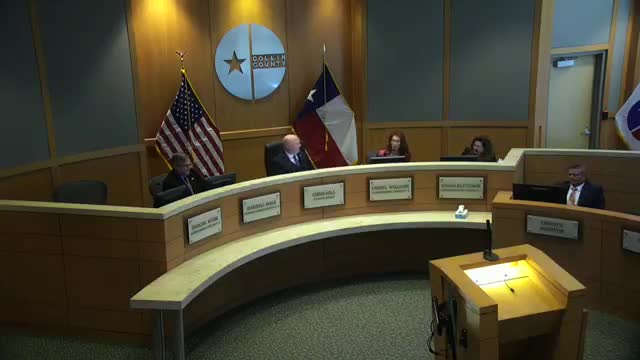Local Officials Address Public Safety Challenges Amid Rapid MUD Population Growth
June 09, 2025 | Collin County, Texas
This article was created by AI summarizing key points discussed. AI makes mistakes, so for full details and context, please refer to the video of the full meeting. Please report any errors so we can fix them. Report an error »

During a recent meeting of the Collin County Commissioners Court, significant discussions centered on the challenges posed by rapid population growth in unincorporated areas, particularly regarding public safety and law enforcement. With the population in these regions surging to approximately 101,000, officials expressed concerns about the increasing pressure on the sheriff's patrol division.
Commissioner remarks highlighted the shift from a rural environment to a denser population, which necessitates enhanced public safety measures. The court has been proactive in establishing agreements with Municipal Utility Districts (MUDs) to ensure that they contribute to public safety services, including law enforcement and emergency medical services. This collaborative approach aims to mitigate the strain on county resources as new developments arise.
A key point of discussion was the need for legislative action to address the complexities surrounding MUDs. Currently, many administratively created MUDs lack the obligations to fund essential services, leading to financial burdens on the county. The court emphasized the importance of engaging with state legislators to amend existing laws, particularly in light of unintended consequences stemming from Senate Bill 6, which has significantly increased the number of MUDs in the area.
The court's recent policy on MUDs was acknowledged as a positive step, but officials stressed the necessity for additional tools to enforce these regulations effectively. The Texas Commission on Environmental Quality (TCEQ) does not currently consider law enforcement capacity when evaluating MUDs, a gap that raises concerns about community safety in densely populated areas.
As Collin County continues to experience rapid growth, the discussions at this meeting underscore the urgent need for strategic planning and legislative support to ensure that public safety and essential services keep pace with population increases. The court's commitment to addressing these challenges will be crucial in maintaining the safety and well-being of residents in the face of ongoing development.
Commissioner remarks highlighted the shift from a rural environment to a denser population, which necessitates enhanced public safety measures. The court has been proactive in establishing agreements with Municipal Utility Districts (MUDs) to ensure that they contribute to public safety services, including law enforcement and emergency medical services. This collaborative approach aims to mitigate the strain on county resources as new developments arise.
A key point of discussion was the need for legislative action to address the complexities surrounding MUDs. Currently, many administratively created MUDs lack the obligations to fund essential services, leading to financial burdens on the county. The court emphasized the importance of engaging with state legislators to amend existing laws, particularly in light of unintended consequences stemming from Senate Bill 6, which has significantly increased the number of MUDs in the area.
The court's recent policy on MUDs was acknowledged as a positive step, but officials stressed the necessity for additional tools to enforce these regulations effectively. The Texas Commission on Environmental Quality (TCEQ) does not currently consider law enforcement capacity when evaluating MUDs, a gap that raises concerns about community safety in densely populated areas.
As Collin County continues to experience rapid growth, the discussions at this meeting underscore the urgent need for strategic planning and legislative support to ensure that public safety and essential services keep pace with population increases. The court's commitment to addressing these challenges will be crucial in maintaining the safety and well-being of residents in the face of ongoing development.
View full meeting
This article is based on a recent meeting—watch the full video and explore the complete transcript for deeper insights into the discussion.
View full meeting
